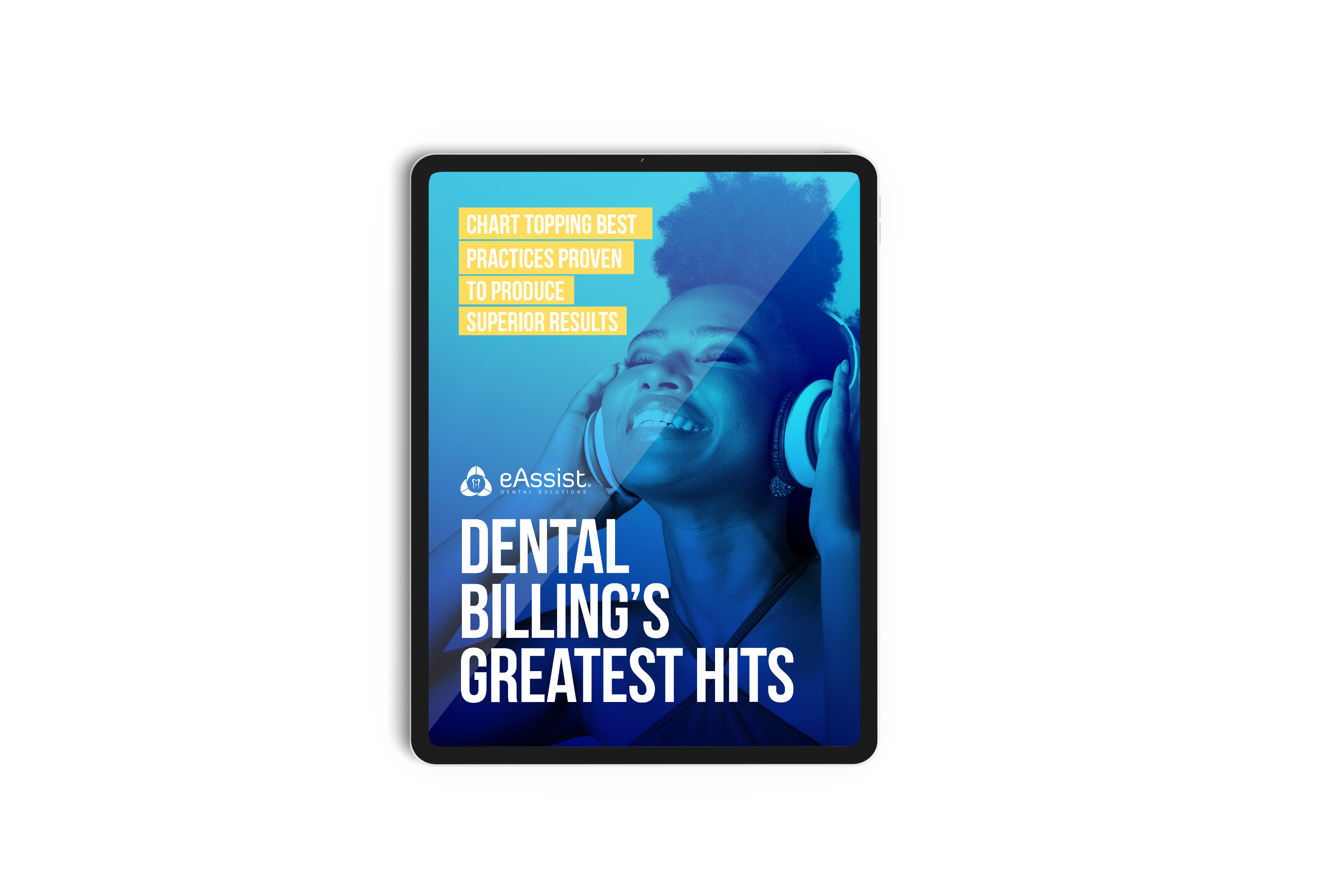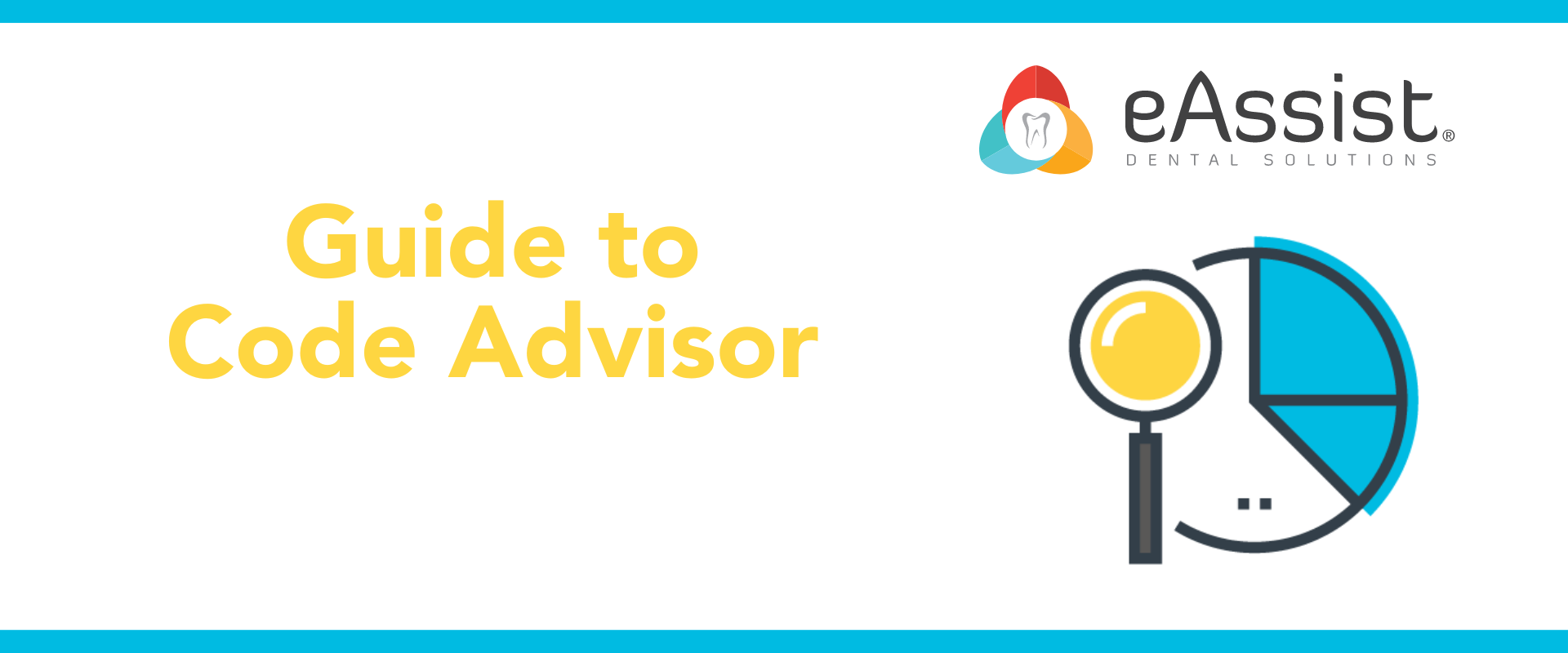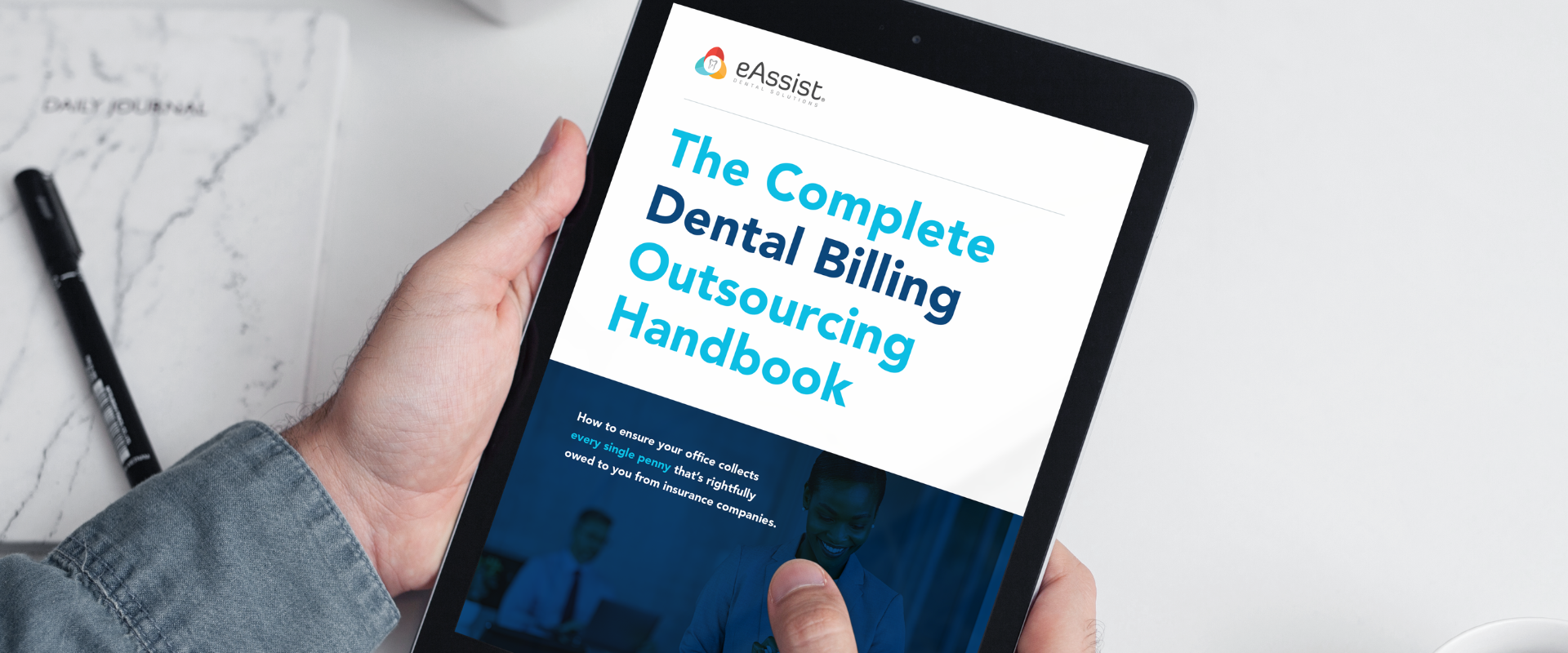Based on more than a decade of working with several thousand dental offices, eAssist Dental Solutions compiled a list of dental billing greatest hits in an ebook available for free download here. These are best practices proven to produce superior results in terms of increased dental insurance collections, increased patient balance collections, more consistent cash flow, and improved revenue cycle management.
- Pre-Appointment Readiness
- Insurance Verification
- Insurance Pre-Authorization
- Patient Co-Payments
- Payment Options
- Current CDT Code Set
- Clean Claims
- Timely Submissions
- Minimal Accounts Receivable
- Tenacious Claim Appeals
- Excellent Patient Experience
In addition, this ebook identifies dental billing’s greatest “mis-hits.” The mis-hits refer to the most common (yet preventable) dental billing mistakes as well as missing or ineffective processes that produce the opposite result of best practices. In this ebook sneak peek, we’ll give you a first look into the ebook’s content. To view more details, click here to download the free ebook.
-
Pre-Appointment Readiness
A pre-appointment readiness plan sets the office up to deliver a positive patient experience, and sets the stage for an efficient and successful billing and collections experience. Prior to seeing the patient, gather accurate patient and subscriber information; verify insurance coverage; schedule the correct provider; and enter everything into the practice management system, including coverage breakdown. When these details need not be chased down, verified, corrected and entered later, clean claims can be submitted in a more timely manner.
-
Insurance Verification
For patients with dental insurance, coverage should be verified prior to providing treatment. Verifying plan benefits up front allows an office to be both transparent and honest about the cost of treatment plans, and potential patient co-payments so there are no surprises later on. This gains patient trust and contributes to a positive patient experience. Many offices find that outsourcing insurance verification is an easy way to ensure it gets done without overburdening the front office staff.
-
Insurance Pre-Authorization
By submitting a pre-authorization request, both the practice and the patient avoid unpleasant surprises regarding non-covered procedures and/or deductibles. Knowing the patient’s co-payment prior to the first appointment also allows the practice to prepare a payment plan offering, should the total cost warrant that as a possible option.
-
Patient Co-Payments
Patient co-payments should always be collected at the time of service. Implement a standard operating procedure so team members are aware of payments due, appropriately remind the patient, and collect payment before the patient leaves the office. Utilize such tools as route slips, morning huddles, patient transfers, and balance due reports from the PMS. Being transparent about estimated or confirmed co-pays builds trust that the office staff has done their homework and understands the patient’s insurance plan and coverage.
-
Payment Options
Collecting outstanding patient balances can be one of the more unpleasant, yet oh-so-necessary dental billing processes. Increase timely payments and decrease the potential angst involved by offering the convenience of various payment options – both high and low-tech. Boost treatment acceptance by offering well-defined payment plans for the more costly or longer-term treatment plans, enabling patients to afford the care they need now, while also financially protecting the practice.
-
Current CDT Code Set
Without question, accurate procedure coding is #1 on the hit parade when it comes to maximizing insurance reimbursements. If an office is not using the most current and comprehensive CDT coding and nomenclature resources and reference materials, the business is forfeiting reimbursements rightfully owed by insurance carriers. The claim submission process still requires experience and skill, but rejections and denials due to inaccurate CDT codes are a preventable impairment to timely cash flow and revenue cycle management.
-
Clean Claims
Clean claims are prepared using the most current ADA claim format (which should be loaded into the practice management system). They include proper CDT codes; the right providers; accurate patient and insurance information; and thorough clinical notes, narratives, and other types of documentation to support the treatment provided. More information on clean claims is found in the ebook!
-
Timely Submissions
A best practice is to submit insurance claims daily – perhaps at the end of the day, or the next morning. If daily is not reasonably possible for an office, submissions should be every two to three days. Or the office should consider outsourcing this function. Batching claims only once per week is insufficient, as some claims are already a week old before they are even put into the collection pipeline. Moreover, some insurance carriers require submission for certain procedures within just days after treatment.
-
Minimal Accounts Receivable
To generate consistent cash flow, every business of any kind must consistently work its accounts receivable aging report to collect outstanding payments as quickly as possible, ideally within 30 days.
-
Tenacious Claim Appeals
An important first step in being tenacious about claim appeals is knowing when an appeal is warranted (find out more in the ebook). When it comes to appeals, if a claim seems to warrant reimbursement, don’t give up; don’t take no for an answer from the carrier unless and until evidence is provided to the contrary. Appealing claims can be time consuming, but it’s an essential process to reduce your accounts receivable. You can streamline claim submissions and appeals by outsourcing your dental insurance billing.
-
Excellent Patient Experience
Delivering an excellent end-to-end patient experience is not just a best practice, it is the best of the best. Satisfied patients drive retention and referrals, which drive practice growth. All office processes must be established with the patient in mind, including dental billing processes.
Conclusion
From our experience with dental practices over the years, we created a Dental Billing Greatest Hits Ebook that lists the top best practices for revenue cycle management. Click here to download the ebook for free!








0 Comments